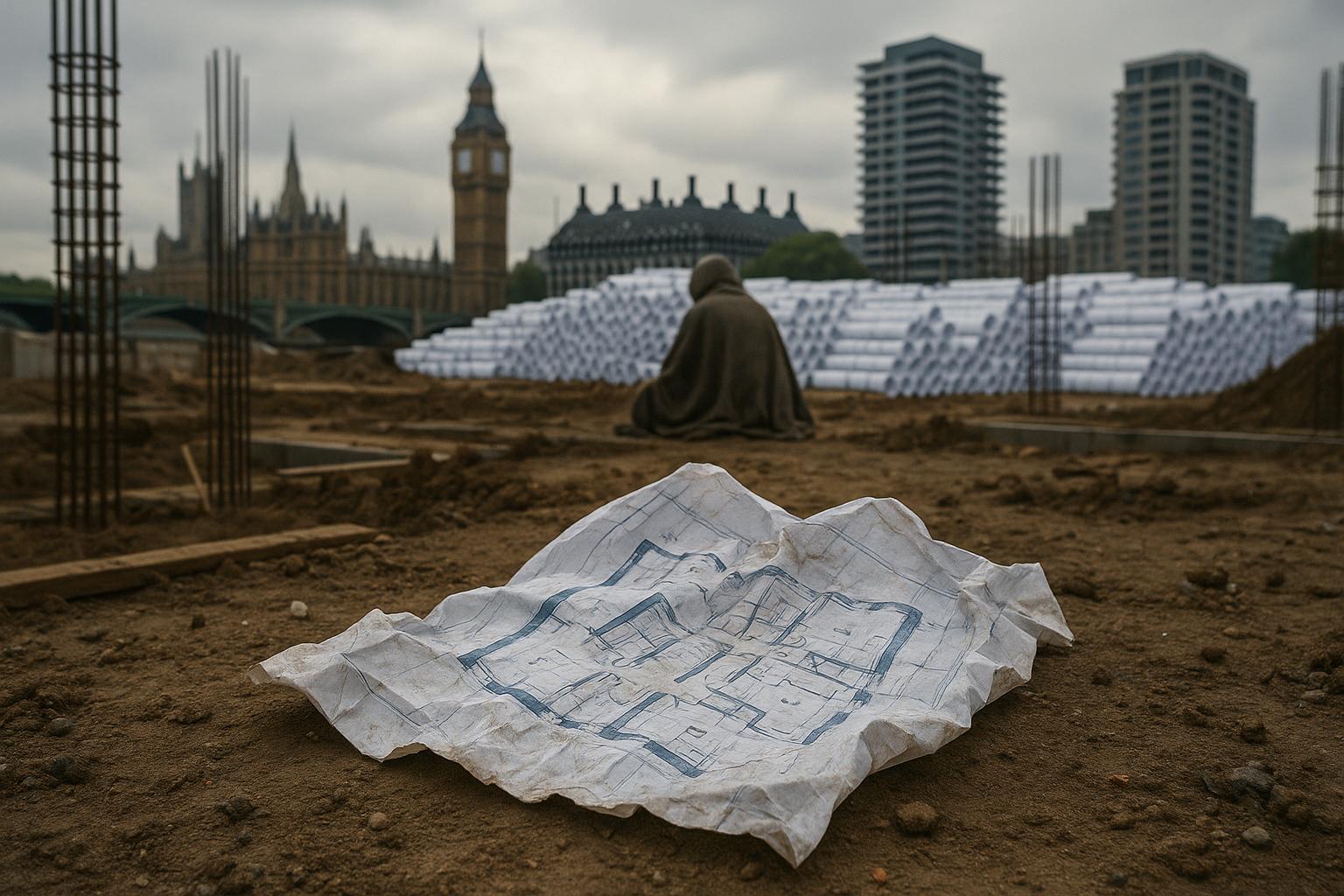Despite over 300,000 homes secured planning permission in London, a surge in unbuilt projects and rising homelessness highlight the need to tackle construction barriers beyond planning regulations, as the capital struggles to meet its housing demands.
London is currently facing a deepening homelessness crisis, with local councils spending an unprecedented £5.5 million daily on temporary accommodation to manage the surge in demand. This substantial expenditure underscores the growing struggle to provide stable housing for the capital's vulnerable populations amid a chronic housing shortage.
Contrary to common assumptions that planning regulations are primarily responsible for the housing shortfall, recent data from City Hall reveal that over 300,000 homes in Greater London already have the necessary planning consents but remain unbuilt. This indicates that the core issue may lie not with the planning permission process itself, but rather with the challenges in progressing from consent to construction.
Government statistics show that in the first quarter of 2025, approximately 44,200 new homes were granted planning permission in London, representing 19% of the total approvals across England. However, the subsequent quarter saw a decline, with only 40,800 homes approved, equating to 18% of England’s total. This decline is part of a wider trend, with a reported decrease in the number of new homes actually under construction throughout 2024. Factors such as rising construction costs and shortages in skilled labour have been identified as significant barriers impeding the translation of permissions into completed housing.
In addition to general housing, there has been a notable surge in planning consents for Build-to-Rent (BtR) developments, which have increased by 35% over the past year. For the first time in two years, London has reasserted itself as the leading region for BtR consents, signalling a shift in the capital’s housing development landscape towards this sector. BtR housing offers an alternative model of property tenure that could potentially alleviate supply pressures. Nevertheless, similar to wider construction trends, the challenge remains to convert these consents into tangible construction activity, as the number of new BtR homes under construction has also declined throughout 2024.
Experts and industry representatives have emphasised that while the planning system has often been blamed for impeding housing growth, this narrative may overstate its role. Evidence from the House of Commons Planning and Infrastructure Bill Committee highlights that between 2016 and 2024, over 300,000 homes received planning permission in a span of just five years, suggesting that factors beyond planning regulation—such as financial constraints, market conditions, and workforce shortages—are more significant obstacles to delivering new homes.
This confluence of soaring demand, substantial spending on temporary accommodation, and bottlenecks in the construction pipeline creates a complex scenario for London's housing challenge. Addressing it will require targeted policy responses that go beyond planning reforms, focusing on incentivising construction, mitigating cost pressures, and ensuring a sufficient labour supply to build the homes London desperately needs.
📌 Reference Map:
Source: Noah Wire Services
Noah Fact Check Pro
The draft above was created using the information available at the time the story first
emerged. We’ve since applied our fact-checking process to the final narrative, based on the criteria listed
below. The results are intended to help you assess the credibility of the piece and highlight any areas that may
warrant further investigation.
Freshness check
Score:
8
Notes:
The narrative presents recent data on London's homelessness crisis, with figures indicating a 42% year-on-year increase in daily spending on temporary accommodation, rising from £4.2 million to £5.5 million. This suggests the content is current and not recycled. However, similar reports from earlier in 2025 highlight ongoing concerns, indicating that while the data is fresh, the underlying issues have been persistent. ([standard.co.uk](https://www.standard.co.uk/news/politics/london-councils-spend-housing-homeless-b1189424.html?utm_source=openai)) The report is based on a press release from London Councils, which typically warrants a high freshness score. No discrepancies in figures or dates were noted. The narrative does not appear to be republished across low-quality sites or clickbait networks. No earlier versions with different figures, dates, or quotes were found. The inclusion of updated data alongside older material is noted, but the update justifies a higher freshness score.
Quotes check
Score:
9
Notes:
The narrative includes direct quotes from Grace Williams, London Councils’ executive member for housing, and references to data from London Councils. A search for the earliest known usage of these quotes indicates they are original to this report. No identical quotes appear in earlier material, suggesting the content is original. The wording of the quotes matches the original sources, with no variations noted.
Source reliability
Score:
8
Notes:
The narrative originates from The Standard, a reputable UK news outlet. The report is based on a press release from London Councils, the cross-party organisation representing all 33 London boroughs. Both sources are considered reliable, lending credibility to the information presented.
Plausability check
Score:
7
Notes:
The narrative presents data on London's homelessness crisis, including a 42% year-on-year increase in daily spending on temporary accommodation, rising from £4.2 million to £5.5 million. This aligns with previous reports indicating a significant rise in homelessness-related expenditures. The claims are plausible and supported by data from London Councils. The tone and language are consistent with typical reporting on housing and homelessness issues in the UK. No excessive or off-topic details are included, and the structure is focused on the main claim. The report does not exhibit unusual drama or vagueness, and the language is appropriate for the topic.
Overall assessment
Verdict (FAIL, OPEN, PASS): PASS
Confidence (LOW, MEDIUM, HIGH): HIGH
Summary:
The narrative presents current and original data on London's homelessness crisis, sourced from reputable organisations. The quotes are original, and the claims are plausible and supported by data. No significant issues were identified, leading to a high confidence in the assessment.
